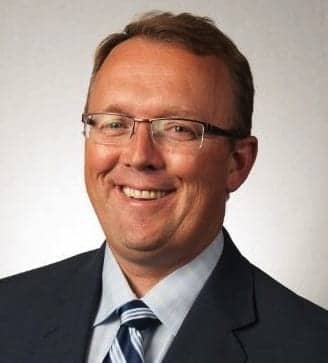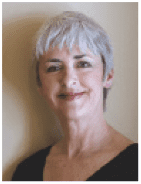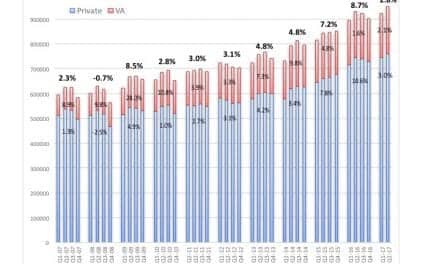The recommendation by the National Academy of Sciences Is On the Mark
By Brian Taylor, AuD, and Stephanie Czuhajewski, CAE
Criticisms of the National Academies of Sciences, Engineering and Medicine (NASEM) recommendations to remove existing Food and Drug Administration (FDA) medical clearance requirements and allow for the over-the-counter (OTC) sale of hearing aids to adults ring hollow, particularly given the expanding body of evidence regarding the risks and comorbidities associated with untreated hearing loss—and the vacuum of proof of harm associated with direct-to-consumer hearing aid sales.
In a September 28, 2016 Hearing Review editorial,1 American Speech Language Hearing Assn (ASHA) President Jaynee Handelsman, PhD, correctly pointed out the importance of hearing to healthy living and quality of life. She also acknowledged the significant barriers to treatment, faced by many of the (at least) 38 million Americans with hearing loss, and the need for expanded Medicare coverage of audiology services for older adults.
Unfortunately, the remainder of her editorial unfairly dismissed the NASEM recommendations to streamline FDA regulations as misguided, using fear and outdated 40-year-old rhetoric to make the case.
A closer examination of the facts and evidence surrounding the NASEM recommendations, particularly in the context of the full report, demonstrates that, while audiologic care remains the ideal standard of care for hearing impaired adults, the risks associated with self-management of hearing problems may be significantly lower than the risks of allowing them to go untreated.2
Figment: The status quo is working.
Fact: Most of those who would benefit from treatment, don’t get it.
- According to ASHA’s published statistics, despite the fact that hearing loss is the third most common chronic condition among older adults, only 20% of those individuals who might benefit from treatment actually seek help. On average, according to ASHA, hearing aid users wait over 10 years after their initial diagnosis to be fit with their first set of hearing aids.3
- The cost of treating hearing loss is an irrefutable barrier for many. So much so, that several prominent national organizations, federal agencies, and the US Congress have sought to address the high cost of hearing care over the past few years.4-7 There are currently at least five pieces of legislation in Congress introduced for the purpose of making hearing aids and/or associated hearing healthcare more affordable and accessible.8-12
Figment: The FDA requirement for a medical evaluation protects the consumer.
Fact: There is no evidence to substantiate any meaningful clinical benefit to the consumer through the medical clearance requirement.
- The waiver is perceived to be regularly overused, a problem first identified more than two decades ago, by the FDA itself. In his 1993 testimony to the US Senate,13 FDA Commissioner Dr David Kessler reported that the medical waiver provision was used far more extensively than expected and did not fulfill its original mission. Kessler further noted that an audiological evaluation would suffice and testified that state licensure ensures competency and that consistent training should replace medical clearance.
- Evidence suggests that approximately 90% of older individuals with hearing loss have sensorineural hearing loss not due to a medically and surgically treatable condition.14 Hearing loss prevalence increases with age. In contrast, the projected number of ear disease cases decreases with age, according to Mayo Clinic audiologist David Zapala, PhD, who presented key data to the NASEM Committee on Accessible and Affordable Hearing Health Care for Adults in 2015.
- At this time, there is no credible evidence demonstrating that the medical evaluation requirement actually leads to the identification and treatment of medical conditions that would not otherwise be identified appropriately by the patient. Further, there is also no evidence that the required medical evaluation, as a condition of purchasing a hearing aid, improves the outcome for patients seeking hearing healthcare.
There are promising new tools being developed that offer promise for consumers self-identify “red flag” and other serious medical conditions of the ear. For example, the Consumer Ear Disease Risk Assessment (CEDRA), presented by Zapala, is designed to assist the consumer in making an informed decision about the need for further medical evaluation. Another similar tool developed by Zapala and his colleagues at Mayo Clinic, the Professional Ear Disease Risk Analytics (PEDRA) is being developed to standardize ear disease risk assessment for hearing care professionals.15
Figment: NASEM recommendations encourage the FDA to move with reckless abandon to remove all hearing aid regulations and thrust manufacturers and consumers into the Wild West.
Fact: NASEM recommendations for OTC hearing aids offer sensible regulatory constraints and include safeguards to protect consumers.
- Even a cursory review of the recommendations yields a thoughtful list of proposed guidelines, standards and requirements, including device output thresholds, Quality System Regulation (QSR) requirements, and labeling requirements.2
- Direct-to-consumer hearing aid sales are already legal and have been tested in the courts. The courts upheld online hearing aid sales without professional intervention, in 2006, with the case Missouri Board of Examiners for Hearing Instrument Specialists v. Hearing Help Express, Inc16 The 8th District Court of Appeals overturned the Missouri (state) ban on online hearing aid sales without prior fitting or testing, noting that the FDA regulations preempted the state ban.
- This argument was also similarly upheld in the 2014 case METX, LLC v. Wal-Mart Stores, LLC.17
Figment: The emperor’s new clothes are beautiful.
Fact: The emperor is naked—and looking for cover.
It is becoming increasingly difficult to separate a hearing aid from a consumer electronic. With regard to amplification technology, “intended use” represents a line in the sand that has been washed away by the tides of innovation. It is no longer possible to distinguish unregulated and regulated devices by intended use. Nor is it always possible to use technological features or performance to differentiate hearing aids from non-regulated products such as PSAPs. This line will continue to blur as wireless ear phones with “hearing aid technology” and smartphone compatibility are introduced to the market over the next few years.
Contrary to popular belief, some of today’s PSAPs are technologically equivalent to hearing aids.18 And, technologies will undoubtedly continue to emerge and advance for both consumer electronics and hearing aids. Attempts to categorize or differentiate these products merely by technological features are counterproductive. Before we even get comfortable with the idea of OTC hearing aids, it is likely that many patients will be using products like Jacoti Hearing Suite to download hearing aids from their smart phones.
The purposeful allowance of an OTC category of hearing devices, for adults, will streamline regulations in a manner that encourages all hearing device manufacturers to register and market their products transparently and responsibly, therefore increasing consumer choice and aligning the products’ intended and actual uses. In a recent article published by the American Association of Retired People (AARP),19 industry insiders claimed that it is the provider who is responsible for two-thirds of the cost of the hearing aid. That assertion is flawed on its face, particularly when considering pricing models for audiologists operating small private practices.
Increasing accessibility to OTC hearing aids will likely expand competition among manufacturers of FDA-registered Class I devices, increase transparency and lower prices in this highly concentrated industry, known for high margins.
Figment: The OTC hearing aid will mean the death of audiology.
Fact: The OTC hearing aid offers unprecedented opportunities for audiologists who deliver exceptional diagnostic and treatment services to patients.
It is important to consider NASEM’s recommendation2 to remove the medical clearance requirement and allow for OTC hearing aids in the context of the full report, including the other 11 recommendations. When taken in totality, it is easy to see that there will be incredible demand for hearing healthcare services in the future. The availability of OTC hearing devices may actually help raise awareness about audiology services and allow the public to make better informed decisions about their treatment options.
Telehealth, including remote counseling, otoscopy, and hearing aid programming, will be achievable.20 Your patients may come from across town or across the world in the future!
Audiologists who are ready to meet those demands by intervening in the hearing care of adults using innovative delivery approaches will be the providers of choice for tomorrow’s consumers. In order to remain at the forefront of care, however, audiologists must be quick to embrace new technologies, and eager to develop new models of care.
Soon, audiologists will need to be proficient at providing care to two distinct groups:
- Patients with more complex hearing disorders that often require remediation with traditional hearing aids, and
- Aging consumers in need of communication enhancements in order to maintain an active and vibrant lifestyle.
In the meantime, let’s thoughtfully explore the opportunities borne from the disruptions at hand, including creating new evidence-based, clinically proven mechanisms for assisting individuals who choose to purchase their amplification products using a direct-to-consumer model.
References
1. Handelsman J. Commentary: OTC Hearing Devices Could Make Hearing Worse. Hearing Review Online. Sept 28, 2016. Available at: https://hearingreview.com/2016/09/commentary-otc-hearing-devices-make-hearing-worse
2. Blazer D, Domitz S, Liverman CT. Hearing Health Care for Adults: Priorities for Improving Access and Affordability (2016). Washington, DC: Committee on Accessible and Affordable Hearing Health Care for Adults; Board on Health Sciences Policy; Health and Medicine Division; National Academies of Sciences, Engineering, and Medicine;2016. Available at: https://www.nap.edu/catalog/23446/hearing-health-care-for-adults-priorities-for-improving-access-and
3. Oyler AL. Untreated Hearing Loss in Adults—A Growing National Epidemic. Washington, DC: ASHA;Jan 2012. Available at: http://www.asha.org/Articles/Untreated-Hearing-Loss-in-Adults
4. Office of Disease Prevention and Health Promotion (ODPHP). Hearing and Other Sensory or Communication Disorders. 2014. Available at: https://www.healthypeople.gov/2020/topics-objectives/topic/hearing-and-other-sensory-or-communication-disorders
5. Dubno JR, Beck LB, et al. NIDCD Working Group on Accessible and Affordable Hearing Health Care for Adults with Mild to Moderate Hearing Loss. Bethesda, Md: NIDCD. August 2009. Available at: https://www.nidcd.nih.gov/workshops/accessible-and-affordable-hearing-health-care/2009
6. President’s Council of Advisors on Science and Technology (PCAST). [Letter.] October 2015. Available at: http://www.whitehouse.gov/sites/default/files/microsites/ostp/PCAST/pcast_hearing_tech_letterreport_final2.pdf
7. Federal Trade Commission. Buying a Hearing Aid. September 2010. Available at: https://www.consumer.ftc.gov/articles/0168-buying-hearing-aid
8. US 114th Congress. Hearing Aid Assistance Tax Credit Act (HR 1882/S 315). Introduced April 16, 2015. Available at: https://www.congress.gov/bill/114th-congress/house-bill/1882/all-info
9. US 114th Congress. Medicare Hearing Coverage Act of 2015 (HR 1653). Introduced March 26, 2015. Available at: https://www.congress.gov/bill/114th-congress/house-bill/1653
10. US 114th Congress. Help Extend Auditory Relief (HEAR) Act (HR 2748). Introduced June 12, 2015. Available at: https://www.congress.gov/bill/114th-congress/house-bill/2748
11. US 114th Congress. Audiology Patient Choice Act (HR 2519). Introduced May 21, 2015. Available at: https://www.congress.gov/bill/114th-congress/house-bill/2519
12. US 114th Congress. Medicare Audiology Services Enhancement Act (HR 1116). Introduced March 10, 2015. Available at: https://www.congress.gov/bill/114th-congress/house-bill/1116/text
13. US 103 Congress Senate Special Committee on Aging. The Hearing Aid Marketplace: Is the Consumer Adequately Protected. Sept 15, 1993 [Serial No 103-12]. Available at: https://archive.org/details/hearingaidmarket00unit
14. Zapala DA, Stamper GC, Shelfer JS, Walker DA, Karatayli-Ozgursoy S, Ozgursoy OB, Hawkins DB. Safety of Audiology Direct Access for Medicare Patients Complaining of Impaired Hearing. J Am Acad Audiol . 2010;21:365–379. Available at: https://audiology-web.s3.amazonaws.com/migrated/SafetyofAudiologyDirAcc.pdf_5386cdbf06edb4.53934137.pdf
15. Nuber C. Overview: Third Meeting of Committee on Accessible and Affordable Hearing Care. Sept 15, 2015. Available at: https://hearingreview.com/2015/09/overview-third-meeting-committee-accessible-affordable-hearing-care
16. US Court of Appeals, 8th Circuit. Missouri Board of Examiners for Hearing Instrument Specialists v. Hearing Help Express, Inc. Decided May 11, 2006. Available at: http://caselaw.findlaw.com/us-8th-circuit/1432490.html
17. US District Court, E.D. Texas, Marshall Division. METX LLC v. Wal-Mart Stores Texas LLC. Signed July 29, 2014. Available at: http://www.leagle.com/decision/In%20FDCO%2020140815F15/METX,%20LLC%20v.%20WAL-MART%20STORES%20TEXAS,%20LLC
18. Killion MC. Comments on the Boundary Areas between PSAPs and Hearing Aids: Definitions and Regulations. Aug 18, 2015. Available at: http://hearinghealthmatters.org/hearinprivatepractice/2015/boundary-areas-between-psaps-and-hearing-aids-part-1
19. Gandel C. Why Do Hearing Aids Cost So Much? AARP, Oct 3, 2016. Available at: http://www.aarp.org/health/conditions-treatments/info-2016/hearing-aid-costs-prices-cs.html
20. Northern JL [guest editor]. Extending Hearing Healthcare: Tele-audiology. Hearing Review. 2012;19(11):12-16. Available at: https://hearingreview.com/2012/10/extending-hearing-healthcare-tele-audiology
About the Authors
Brian Taylor, AuD, is senior director of clinical affairs at Turtle Beach Corp, San Diego, and serves as a clinical advisor for Fuel Medical Group in Portland, Ore. Stephanie Czuhajewski, CAE, is the executive director of the Academy of Doctors of Audiology (ADA), Lexington, Ky.







Based on your analysis there is no need to license Auiologists since no harm will be caused to the public because the consumer makes a prescriptive analysis and can determine that no adjustments are needed for background noise. Most people cannot afford homes. Why do we need licensed real estate brokers which only increases the cost of homes.
My parents just went to an audiologist for bilateral hearing aids and were given 8 hearing aids to take home and try, and are now being fitted with “what they like best” without probe mic measurements. How is this any different than OTC hearing aids? The difference is that they will pay 10x as more in the current model.
Some of the PSAPs that will be coming out will really be like hearing aids…the technology isn’t sealed and it’s not rocket science…to think that the “Big 6” can produce the only hearing aids that will work for consumers is total BS. Yep, it’s all about money, when hasn’t it been? So they get experts to tell us they are bad and won’t help and could possibly damage the ear…if they help some poor sap who is on a fixed income and is disabled to hear his wife again…WOOT! That’s what it is all about..I’m sometimes ashamed to be in this industry…bunch of money grabbers.
Interesting perspective. Thanks for sharing your thoughts on the subject.
Hearing Loss